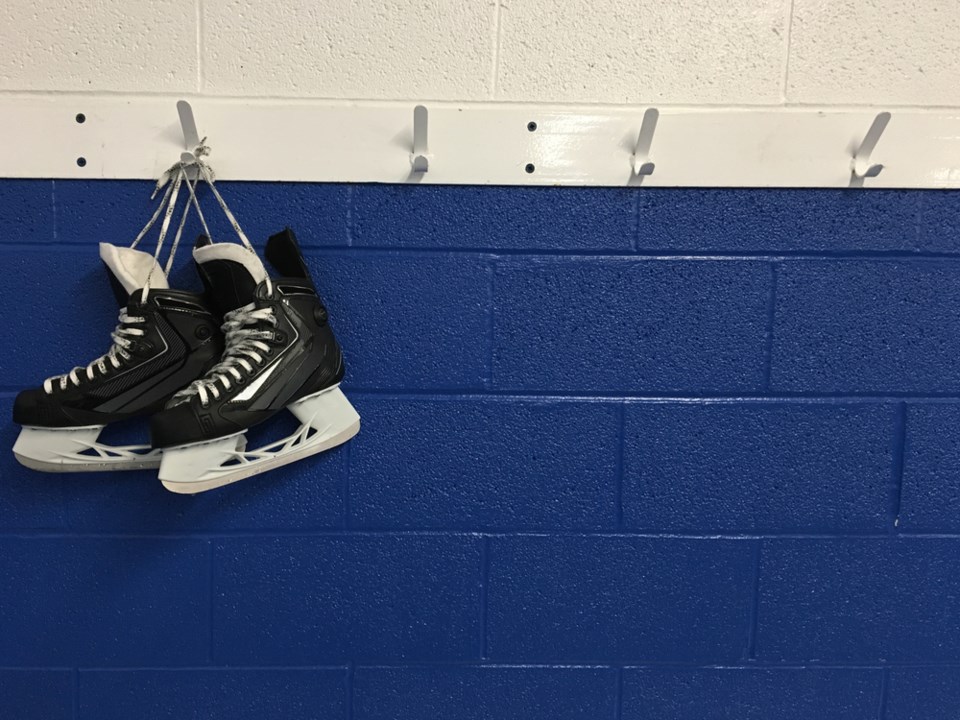“Thank you sir, may I have another?”
-Animal House, 1978
I was 11 when I first saw the film. That scene felt wrong then, and it feels wrong now. 40 years ago it struck me that the boys in the room laughed; it was lost on me that it was funny to them.
Google that movie line and the YouTube video comes up titled “Fraternity Paddle.” It’s hazing.
Hazing is normalized by calling it “initiation” or “a ritual that bonds.” What it really is, and should be at all levels, is a crime.
When hazing goes too far it becomes, at the very least, a psychological life-altering scar. At its worst, manslaughter.
A search with key words “hazing deaths” comes up with only US numbers, but those numbers are chilling: at least one university hazing death has been recorded each year from 1969 to 2017.
One is one too many. It’s heartbreaking to think of those (at least) 49 families torn apart in the name of “initiation” or “bonding.”
I’ve witnessed a lot of “Bro Code.” My childhood was spent largely surrounded by boys, a Dad who was a Coach at one of Vancouver’s largest schools. As an adult, a big chunk of my broadcast career was as a sportscaster.
So much has been normalized. Think: rookies making pennies “expected” to foot the bill at pricey restaurants, for elaborate team meals, as veteran multi-millionaires smirk. Then there’s the “hilarious tradition” where rookies are dressed in drag. Harmless hazing, right? Wrong.
It’s the harmless stuff that escalates, eventually, to the sinister hazing we’ve recently seen come to light at St. Michaels College School. Members of that school’s football team, aged 14 and 15, allegedly pinned down a student in a locker room and sexually assaulted him with a boom handle.
In 2018, it seems the leap from one extreme to another is all too easy.
If not for social media, this gang rape would have remained hidden by the Bro Code. I shudder to think the number of times this terrorizing behaviour has gone unnoticed, cloaked in the code.
Last week I stumbled upon the Twitter account of former NHLer and two-time Stanley Cup winner with the Chicago Blackhawks, Daniel Carcillo. He broke the Bro Code by revealing that during his rookie year with the Ontario Hockey League (OHL) 2002 Sarnia Sting, he and 10 others were abused by his teammates. I urge you to read the thread he posted, a visceral account of what he endured and witnessed.
The Bro Code counts on people like Daniel Carcillo to stay silent. Telling coaches or team administrators – even in confidence – comes with concerns about being tagged a troublemaker. That might impact your role on the ice/field of playand significantly stall your path to The Dream.
In his tweets and interviews since, Carcillo references how he was a teen living with a billet family. He didn’t feel comfortable telling them of the abuse, and knew if he told his folks they would come get him and “end his dream.”
In the days since Carcillo’s tweet storm many of his former teammates, coaches and even David Branch, the highly-respected OHL commissioner and Canadian Hockey League president, apologized. Branch went past simple acknowledgment of the allegations adding how he did not know “how bad things were” and that these allegations were “sickening” and “shocking.”
Carcillo’s Code Breach brought forward teammates who corroborated his account – but also a few who’ve pushed back, questioning motive for opening up. Some say Carcillo is trying to monetize things, others are calling his on/off ice character into question. Obviously, he’s cast a negative light on his teammates of that time.
Hijacking the narrative here does a disservice to the goal of putting a halt to hazing.
We are talking teenagers, in Carcillo’s case – 17-year-olds. Kids attacking kids in the name of sport.
Within sport, hazing is an open secret. It needs to have consequences that reach the fullest extent of the law. Athletes (and really, kids in general) need to be told that these acts will be met with adult charges. Those who take part in hazing rituals need to know that severe legal circumstances will follow, and stick.
All too often the “out” for the perpetrator is that, if caught, they’d be charged as a minor, with no criminal record. This should be where change begins moving forward. Make the severity of hazing part of the school curriculum, part of training camps and drafts. Let there be a mandatory meeting for all students, athletes, fraternities, sororities, etc. and make it clear, in no uncertain terms, that there’s zero tolerance.
Not only no “first strike,” but that hazing will be punished to the fullest extent of the law – and witnesses/bystanders do not get a pass.
Animal House was released in 1978. It would be nice to think that we’ve learned something in the last 40 years.
It’s not funny, it’s not initiation. Hazing is criminal, and should be treated as such.
Jody Vance is a born and raised Vancouverite who has spent 30 years in both local and national media. The first woman in the history of Canadian TV to host her own sports show in primetime, since 2011 she’s been working in both TV and radio covering news and current affairs.



